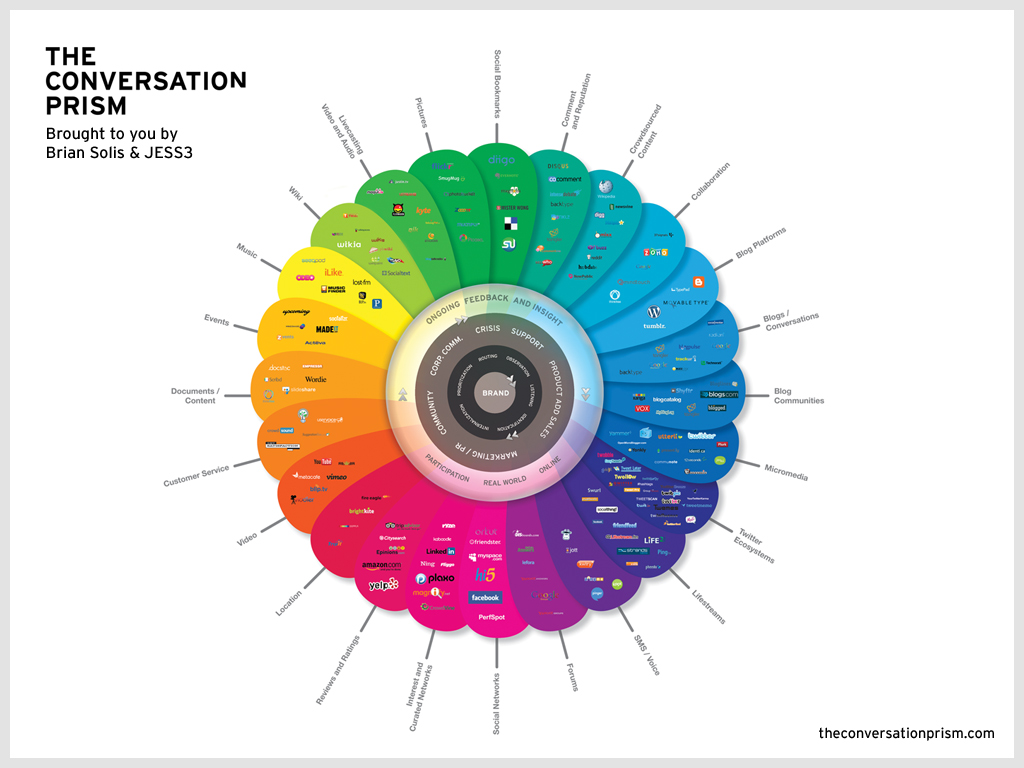No doubt Social Media has a huge impact in online business and its promotion so here are some 40 Quick Social Media Tips for Your Business.
General Social Media Thoughts:
1. Don’t talk about religion, politics, or sports unless you represent a religion, a politician, or a sport.
2. Keep your post 90% on topic in your business.

3. Don’t over sell, educate about 90% of the time.
4. Re-Post other material that would appeal to the audience you are creating.
5. Always ask yourself, “Would my audience find this interesting or informative?”
6. Update your Google+ & LinkedIn status daily.
8. Fill out all your profile information the same on all your social media.
9. The naming of your social media handles should all match.
10. Offer Foursquare or other social media specials not found any other place.
11. Add social media buttons to your websites, emails, and product literature.
13. Write a press release on your business at least once a quarter. Tag it with keywords.
14. Add pictures to your business
Pinterest page and link them to your website or blog.
Twitter:
15. Design a custom Twitter background with your company’s contact information.
16. Tweet at least three to four times a day.
17. Follow people that matter to your business or potential clients.
18. Welcome all new followers (SocialOomph is a great way to do this.)
19. Check your Mentions and Replies daily.
20. #Don’t #over #hashtag #everything #you #tweet.
21. Tweet out your new blog posts.
22. Consider a dashboard application like Hootsuite or TweetDeck to help manage your tweets.
Facebook:
23. Update your Facebook wall daily.
24. You best Facebook wall post times are between 8:30a-9:30a and 4:30p-7:00p Monday through Friday.
25. Your best weekend and holiday post times are 10a-12p and 4:30p-7:00p.
26. Cross “Like” other businesses whose audience would benefit from your product.
27. Be the last to respond to all comments on your Wall even if it is “Thanks.”
28. Insert pictures into your wall posts.
29. Consider adding custom tabs or contact forms to your Facebook fan page.
YouTube:
30. Keep your videos short. Best time length is 30 secs to 2 mins.
31. Each video you create should address one project or answer one question.
32. Mention your company name in the beginning of all titles, descriptions, and tags.
33. Brand the background of your YouTube channel.
Blogs:
34. Create blog at least weekly.
35. Whatever blogging frequency you start, you must stay consistent.
36. If you consider yourself a serious blog, host your own blog on your own URL and SEO each and every blog post.
37. Keep your blogs short between 400-700 words.
38. Start a blog post with a good picture.
39. Comment on other blogs in your industry and add social media sharing buttons to the bottom of your posts.
40. Embed your YouTube videos in your blog posts.













![Brand Imaging & Build Leads Via LinkedIn [Infographic] Brand Imaging & Build Leads Via LinkedIn [Infographic]](https://blogger.googleusercontent.com/img/b/R29vZ2xl/AVvXsEjVIq7mzxErZ_Bl9Hr-XSlA35UoyRYX6y5uPnGJtPUIPi-qMuoQp8sowVtlzlcge09mXbkaKukoCyiCp7IIGji4WLmcVBmHLKnmQpN84uqBdf9XhxZKF8rbXBLuNukXpdMCGLbLtU0ZoSgk/s640/LinkedIn-Brand-Imaging-Build-Leads.jpg)
![How Social Media Helps In Recruiting [Infographic] How Social Media Helps In Recruiting [Infographic]](https://blogger.googleusercontent.com/img/b/R29vZ2xl/AVvXsEhEfzRJpEZ9IwAzRIf88W9BctUB8dRJhW4vTC5uK0fs-K9fClcDVsyZtx_gc0PU5TOFMvEp30CHYaDdOjlBKYpl82z1GQjTfFBKSnBKPkxXH3F2s2MhdYVQaDsJItw1jTAlDaMarg-h1PNP/s640/social-media-recruiting.jpg)

![The Internet & Social Media Revolution [Infographic] The Internet & Social Media Revolution [Infographic]](https://blogger.googleusercontent.com/img/b/R29vZ2xl/AVvXsEjHBsUKK-Px6MRu72kXeaqZzzzdCULDMN631CCdgKkkhhFmYbpO_dMOqADTv4IDLhwfV4yBDWNVykXLcNuEv1Sg1tNrVdWIy7Y8GzKgQ-NBBa6rbB7uIm2dnhTAK9J1fok6FDYF_RXhOAcT/s640/Internet-and-Social-Media-Revolution.jpg)
![China’s Social Media Equivalents [Infographic] China’s Social Media Equivalents [Infographic]](https://blogger.googleusercontent.com/img/b/R29vZ2xl/AVvXsEhrB3JW8RyFVkzI67Fv-kvrtzFaTtAHRifEFjNZ5O8zudqZT31yYcaBaEUxcP9k97lYHIzD9mTMJBucYHpRKir9zIGC-4-E-PRHwwQGaPEcBq2qK0Umo0b5SmtmlrnvXCU3_pmedrTbCqUe/s640/social-media-china.jpg)

![How Much Data Is Generated In One Minute [Infographic] How Much Data Is Generated In One Minute [Infographic]](https://blogger.googleusercontent.com/img/b/R29vZ2xl/AVvXsEg3nZFAlE7wKqxg09twjHjkSvyXLRLRNBiL-tF1T3kx9TALd_tAN2gNwP_ABkzXXg1MatDQJNjBFjF-xEd-_Bowrvd-vznx3aGhPjJAZse1JmJEyAYCo1Prm7ZZRnTIsLnyWRzZvAs0sKvT/s640/data-in-one-minute.jpg)

![Digital Acquisitions & Mergers Between Most Prominent Businesses [Infographic] Digital Acquisitions & Mergers Between Most Prominent Businesses [Infographic]](https://blogger.googleusercontent.com/img/b/R29vZ2xl/AVvXsEicerjMF-2F609BNTOfop0JUHoFNIJ7qNvBm35zKFcwHyQUHF7eriLTCPCWRdCPzX4J2yjf0jXATzDoSbo2pQ_OrDBBeiDo5pBSi6KDJtb-Gs1iLDbtbIP5McBdTu9EMnukft_EOzbZfPwy/s640/mergers-and-acquisitions.jpg)

![How Executives Are Using Social Media [Infographic] How Executives Are Using Social Media [Infographic]](https://blogger.googleusercontent.com/img/b/R29vZ2xl/AVvXsEj1cbmJt2Km0PAD-zPrcTAaiBjjtx41K5kCUuvsbRDawimCQ_h0N-cTDQ3ZWbdJb-8fdbZvPB34DGloG0ydhWHEwxzKttjzr6s6X2TaKB5MfzO_AzxEniUM8QFRWJAt3o8zqpt5NH6GjSPk/s640/how-executives-are-using-social-media.png)

![How Your Travel Habits Influence Your Social Media [Infographic] How Your Travel Habits Influence Your Social Media [Infographic]](https://blogger.googleusercontent.com/img/b/R29vZ2xl/AVvXsEgWf0hj-GInJzzqsJx-6kfF1AoWx2ESW_DTzhtw6Si5CBpU3uDGWJbr8xN5o62GsoOihRTGJpTpxJnrmy0rJT0H0KvYKm9QSh86dOjbLZAwcqew6r6b0C7JE4lxK_aVyLFzITnQwG-nMmnK/s640/social-media-tech-habbits.jpg)

![The Impact of Social Media on the PR Industry [Infographic] The Impact of Social Media on the PR Industry [Infographic]](https://blogger.googleusercontent.com/img/b/R29vZ2xl/AVvXsEgcRkCdLLSmL3UeGEHX3DTeWWv184OBo_EwxhyphenhyphenatLTOO6WBmp6lEk_o188FoTDzGsBXP0OLoo32XGtVln4_gTGF3wKByPQEh98KueYdYPfHqtVR4wEQU1XUI3IjQzVd0Mkr4c1mO73z1MaQ/s640/social-media-public-relation.jpg)

![Infamous 70/20/10 Rule of Facebook [Infographic] Infamous 70/20/10 Rule of Facebook [Infographic]](https://blogger.googleusercontent.com/img/b/R29vZ2xl/AVvXsEhdILloe4bOY4jK-3TCXWnytfHLkYwPc4Q4ZHDYwIIiwm4tgOEzph1AIaML_MkK0cpu3fqejd2BfhIuah7DEtvuLkfJ3yK1wGV3FBcUEDdvhBCiHuzNbrZ2jgiuaFjwsyKcW-Y7Q0f-o_wf/s640/Facebook-Posting-Rules.jpg)



![How To Build Your Brand Online [Infographic] How To Build Your Brand Online [Infographic]](https://blogger.googleusercontent.com/img/b/R29vZ2xl/AVvXsEhBACeIert1Z4NXFMGvshm-kpJPXUfm7FAxCEx0WPB1_UEmQANicziOgHzEBOmRf6P-7k5rOxqkFJcmKR5BD4wVThn4ORvGKOqzriQGcJY02S7vaeRvvFAAc-z-B2rCZdYs2zjybUagDHR1/s640/how-to-build-your-brand.png)


![Top 10 Restaurants In Social Media [Infographic] Top 10 Restaurants In Social Media [Infographic]](https://blogger.googleusercontent.com/img/b/R29vZ2xl/AVvXsEhO4Nw32POP1Zg737plrg0yKE3fO9QzZCEVoSl3P87GxIvpbYW1TVLI_1BuaMrUopnx7_b7tel0Ewti6-ZY4kqlQx6euidKEkBXsyDvCuzFqsUbQF-3pYaoz_zpEpDtmmvrC5oi83csw-GZ/s640/top-10-restaurant-social-media.png)

![How Can Social Software Get You Fired [Infographic] How Can Social Software Get You Fired [Infographic]](https://blogger.googleusercontent.com/img/b/R29vZ2xl/AVvXsEjcNlPKxUtN_1S-r8azvKIG-Rcrhfwq0L_Mq6DJy2UmY6U0jH__v2ARMo-Aisv8td9M0lceibjQu9P51jLRT4kxOwr06lcsOaZntAwkHqcLJJ-TvW-i11BItWQs0uJ1j4fNFiX7ZDp_rcM1/s640/social-media-fired-you.jpg)

























 Recent
Recent Tags
Tags Popular
Popular



